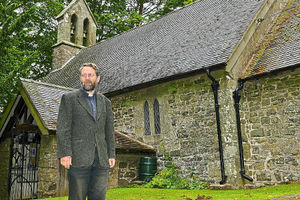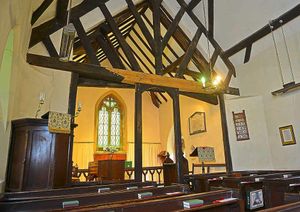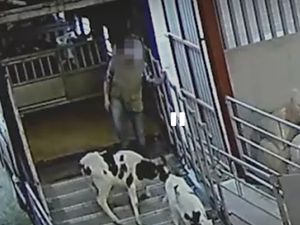Church spotlight: St Margaret's Church at Abdon
Pilgrim's Cottage. Bank House Farm. Park View, No. 1 Abdon View – they each have their own embroidered image.

"They set out to get a kneeler for just about every house in the parish," says the Rev John Beesley, priest-in-charge of St Margaret's Church at Abdon.
"If they haven't quite managed it, it's very close."
There are around 50 hand-embroidered kneelers which have been made over the years by parishioners at the idyllically located church, next to the deserted medieval village on the western side of Clee Hill.
Established: 1138
Capacity: around 80
Main services: Holy Communion, every second Sunday at 9.45am; Evensong and Holy Communion every fourth Sudnay, 6pm in summer and 3pm in winter.
During the tenure of rector the Rev. John Ball, around 1700, hay, grain, apples, pears, hemp and flax, pigs, lambs, geese, egges and honey, and sheeps wooll were paid in kind. Customs (taxes) were charged for the fall of a colt one shilling; for the fall of a calf - four pence; for the sale of a sheep - a halfpenny; for the milk of a cow - one penny; for Easter - oblations two pence each communicant.
According to the records of 1932, Abdon was a parish of some 2,189 acres. In early times it was Abbeton, being the farm or enclosure of a certain person named Aba or Abba.
In 1932 the Shropshire Parish Register Society transcribed the historic registers, which can now be examined in the County Record Office in Shrewsbury. They reveal that towards the end of the 17th century, it was necessary for people to be buried in wool as part of a drive to support the wool industry. A declaration in oath saying that this regulation had been complied with, had to be presented to the rector before burial could take place.
They also reveal that in 1407 there was a commission to the Dean of Wenlock to hold the goods of the late Rector of Abdon till the dilepidations are made good."[/breakout]
The village's red telephone box, a young couple's wedding, all aspects of village life are reflected in these small, lovingly made cushions. And Mr Beesley, a former schoolteacher who arrived in the parish two years ago, says they are always the subject of much interest among visitors to the church.
"It's an amazing set," he says. "It is one the sights that people come to see."
St Margaret's is a church steeped in history, with its circular churchyard possibly suggesting that it was used as a site for worship before Christianity came to Britain.
The present church can trace its history back to 1138 but, except perhaps for the thick walls of the nave, little of the original fabric remains.
It is hard to imagine what the church would have been like in those times; it would have certainly been a very busy place, at the centre of a community which apparently deserted the area in the 14th century. Today, the lost village is represented by the tell-tales mounds and undulations which make it a fascinating site for visitors.
By the end of the 18th century, the church itself was also in a somewhat ruinous state, leading to a major rebuilding project. In 1737 a sum of £1,120 was necessary for repairs and many features of the present building date from then.

The sole original window, in the medieval decorated style of architecture, is in the south wall of the chancel, although that has also been repointed. The cast window was placed there by the Rev W S Dear during his period as rector, from 1829 to 1850. Two other windows have been added: one at the west end of the north wall in 1909 and the one opposite in 1910.
There were also major alterations in 1860. when the gallery at the west end was taken down, and the nave extended. At this time the bell-gable was also rebuilt.
The font is early English, dating from the 12th-13th century. Between 1740 and 1860 the church had three bells, when they were replaced with two new bells.
Mr Beesley says another feature is the wooden partition between the nave and the chancel.
Today, the church has a close-knit congregation of around a dozen members, although Mr Beesley says the church can easily fill up for major events such as the harvest festival or Christmas.
A former curate in Ludlow, he says he enjoys the peaceful location, although he adds that it is a myth that nothing ever happens in rural communities.
"The church and the village hall are at the centre of village life, and there is always some event going on," he says.
"There are regular coffee mornings, a sewing club and a flower club." The village is also gearing up for the Abdon dog show on September 6.
"In some ways it is different from Ludlow, but people are the same wherever you go," he adds.
"The thing I like most about Abdon is the people."




